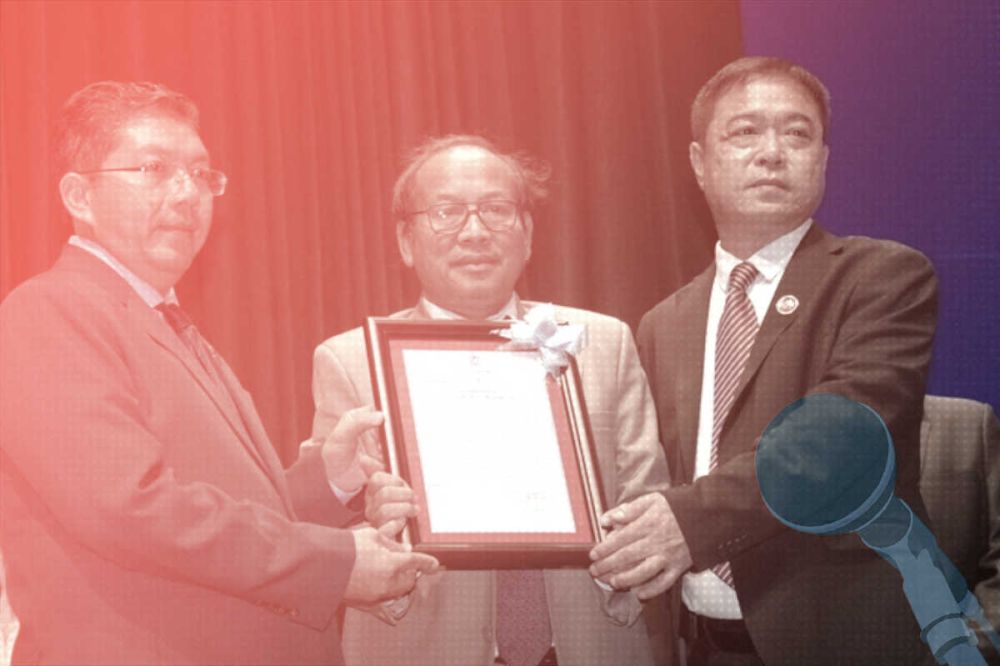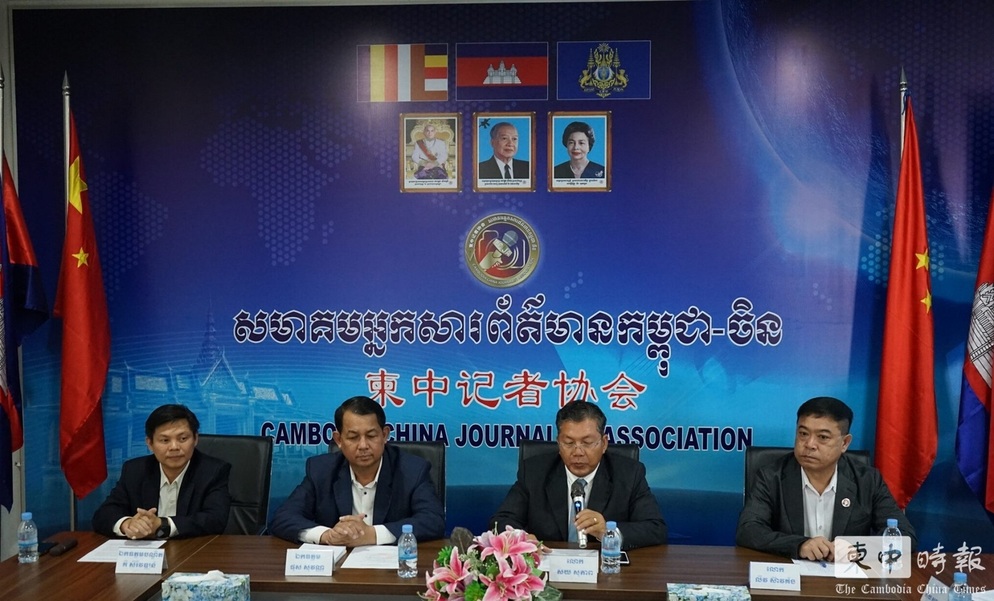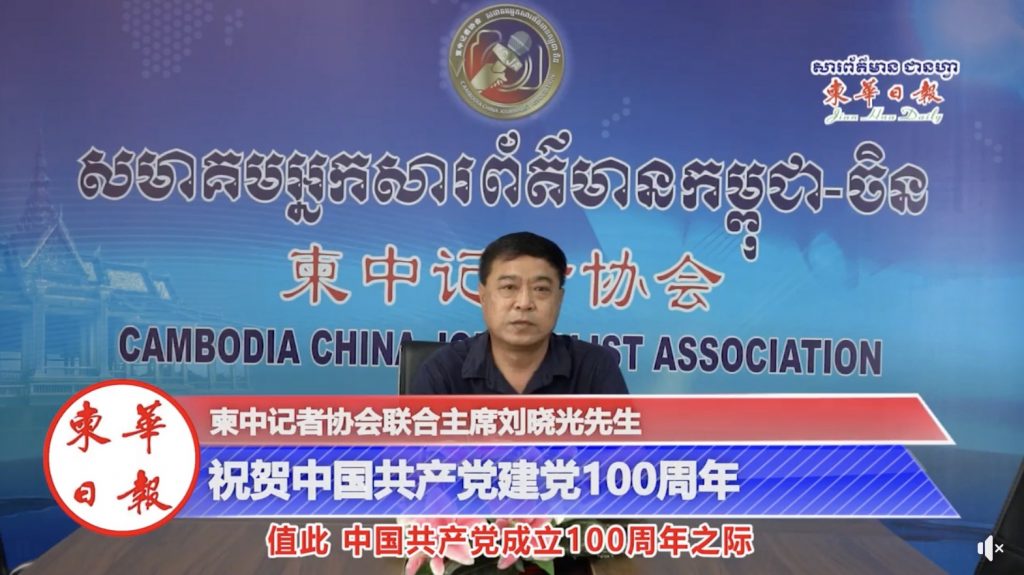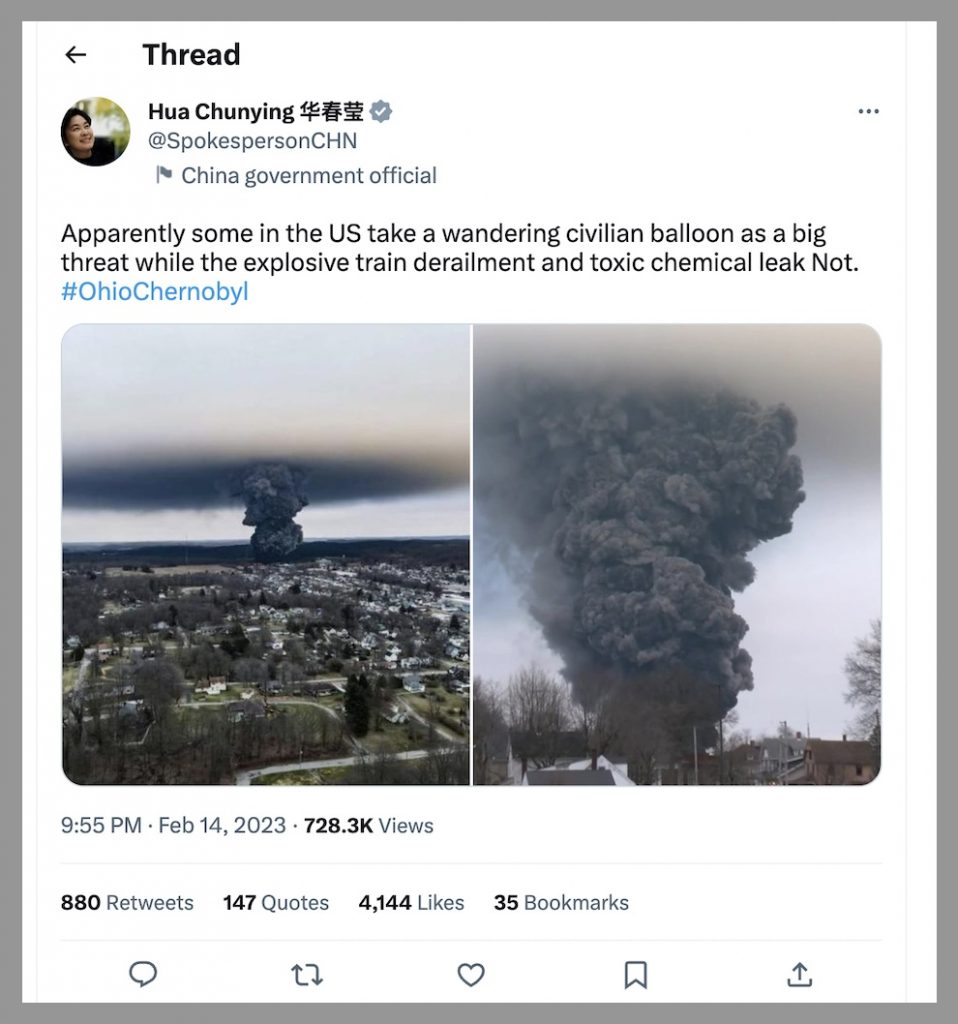Going Global
Faking the Fake News Debate in Cambodia

Addressing an audience in Phnom Penh last month, the chairman of the Cambodia-China Journalists Association (柬中记协), Liu Xiaoguang (刘晓光), urged his colleagues in the media to uphold “a spirit and attitude of professionalism” as they worked to combat fake news. But Liu, who is also editor-in-chief of the local Chinese-language outlet The Commercial News (华商日报), quickly confounded this professional call with a flagrant political agenda.
“As media people, we must at the same time be alert to the fact that Western media still have a strong measure of discourse power in the international arena,” he said. “They still mainly favor their own countries . . . . as they report international news, and they criticize, smear and spread disinformation against countries that do not listen to the West or have different views.”
To support his point about Western bias, Liu accused the American mainstream media of blatant double standards in their downplaying of the serious environmental impact of the train derailment in East Palestine, Ohio, and in their outright suppression of a report by American investigative reporter Seymour Hersh alleging US government involvement in the sabotage of the Nord Stream pipeline in the Baltic Sea.
There was just one problem — both of these case studies in American media hypocrisy were fake news cooked up on the kooky fringes of the internet and gleefully picked up and amplified by China’s Ministry of Foreign Affairs (MOFA) and state media.
With its fakery about fake news, the Phnom Penh forum was itself a case study of how China is exploiting professional associations and what it calls “people-to-people exchanges” to advance its global media agenda. At the heart of that agenda is undermining the credibility of Western journalism and by extension its critical, and sometimes even adversarial, relationship with power.
During the February forum, Liu Xiaoguang told participants they must consider the fact that 2023 is an election year in Cambodia, and that the country will also host the Southeast Asia Games. “Therefore it is hoped,” he said, “that domestic media personnel across the board will have a professional attitude, truly and objectively reporting on the achievements and development transformation achieved by Cambodia, working together to safeguard the peace and stability of the nation, and further raising Cambodia’s international image.”

Liu’s sentiments were seconded by a top Cambodian information official, who said at the forum that the government would step up its efforts to combat fake news ahead of the July national election, when Hun Sen, the former military commander who since the 1997 coup d’etat has established and steadily consolidated authoritarian rule in the country, will seek yet another five-year term in office.
At the heart of [China’s] agenda is undermining the credibility of Western journalism and by extension its critical, and sometimes even adversarial, relationship with power.
Implicit in these remarks about the need for the media to safeguard “peace and stability” are definitions of both journalistic professionalism and “fake news” that favor authoritarian regimes in China and Cambodia. Journalists act with a “professional attitude” when they praise the achievements of their national leaders, defending them against hypocritical Western media bent on demonization.
Praise is truth; criticism is fakery.
Telling China’s Story in Cambodia
This upended understanding of journalistic truth, so reminiscent of press policy in China, where Xi Jinping has told media that they must “love, protect and serve the Chinese Communist Party,” was enshrined at the Cambodia-China Journalists Association from the time of its formation on May 6, 2019. During a formal ceremony attended by Cambodian Minister of Information Khieu Kanharith as well as Zuo Wenxing (左文星), the Counsellor for Political Affairs at the Chinese Embassy in Phnom Penh, it was made clear that the association would play a diplomatic role and “promote the overall development of Cambodia-China relations.”
The founding of the association was a big affair for China’s government, widely reported by official Party-state media, including the People’s Daily. According to CCJA Chairman Liu Xiaoguang, negative reporting and commentary about China was the concern that prompted the creation of the association. Repeatedly in 2019, he characterized this as a question of “fake news.”
In October 2019, as CCJA signed a strategic cooperation agreement with the local Chinese Chamber of Commerce in Cambodia to jointly “tell the China story,” Liu explained to the Jian Hua Daily (柬华日报) that the primary goal of the CCJA was to “make more local people understand the contribution of Chinese enterprises and Chinese people in Cambodia,” and to “curb the occurrence of fake news and events that defame Chinese people and Chinese enterprises, thereby reducing confrontation between the two countries, so that they can tell the ‘China story’ together.”
Liu Xiaoguang’s political sympathies were garishly on display on July 1, 2021, as he appeared in a video address to congratulate the Chinese Communist Party for its 100th anniversary on behalf of the CCJA. “Without the correct leadership of the Chinese Communist Party, China would not have obtained the major achievements it has,” he said, perfectly mirroring state propaganda.

At the February forum on “fake news” in Phnom Penh, Liu’s remarks on journalistic professionalism similarly echoed the official narratives of the Chinese government, which in the days prior to the forum had actively sought to frame the Biden administration’s February 4 decision to shoot down a suspected Chinese surveillance balloon as an overreaction that exposed the US as a nation in decline.
Attacks on the credibility of the American media were a key part of this strategy. If the US media lacked the integrity to report truthfully on major stories like the Ohio train derailment and the sabotage of the Nord Stream pipeline — if they merely disseminated fake news to cover up the dirty deeds of their own government — how could their reports and criticisms of Chinese surveillance be taken seriously?
The Fake News Pipeline
In recent years, one of China’s most frequent tactics in dealing with international criticism has been to introduce false and misleading memes through the regular press conferences of its Ministry of Foreign Affairs. Very often sourced from fringe sources on Western social media, or from Russian state media, these are rapidly, even sometimes instantly, picked up and reported by Chinese state media — and are then amplified in the Chinese-language public discourse inside China and beyond. Constructed around base messages about Western hypocrisy, or threats to Chinese national dignity, these memes encourage a reductive and emotional view of international stories as they go viral through mobile platforms.
Attacks on the credibility of the American media were a key part of this strategy. If the US media lacked the integrity to report truthfully on major stories . . . . how could their reports and criticisms of Chinese surveillance be taken seriously?
Before the memes about the suppression of the Ohio and Nord Stream stories surfaced at the Cambodia-China Journalists Association event in Phnom Penh, this is precisely the pattern they followed.
In the case of the Ohio train derailment, one of the earliest references came from Assistant Minister of Foreign Affairs Hua Chunyin (华春莹), who posted to Twitter on February 14 to liken the train derailment to the 1986 Chernobyl nuclear disaster with the hashtag #OhioChernobyl. This was Hua’s direct appropriation of claims on the internet fringe. As the New York Times has since reported (also in Chinese), the notions of a “Chernobyl 2.0” and a widespread media cover-up were part of the whirlwind of conspiracy theories whipped up, often by right-wing commentators, on platforms like Twitter and Telegram in the wake of the train derailment.

Hua’s rehashed “Chernobyl 2.0” meme was picked up by the Global Times, which reported the day after her tweet that the scale of the disaster in Ohio was being hidden. The story quoted an unidentified internet user as lamenting: “Chernobyl 2.0 has happened in Ohio, but the traditional media are shamefully silent.”
In fact, many days before the Global Times piece ran online, the adequacy and professionalism of media coverage of the Ohio incident was receiving lively and much-deserved discussion in the US — exactly what should happen in a self-critical professional media environment, where there is always room for improvement. Just days after Hua’s tweet and a series of take-down stories in the Chinese state media, the New Republic wrote in an in-depth look at coverage in Ohio: “The truth of the matter is that the story is getting robust coverage, especially where it matters: locally.”
For journalists at the center of the story, the suggestion of a cover-up in Ohio was a source of frustration. Joe Donatelli, the digital director of Cleveland’s News 5, tweeted on February 15, the same day as the Global Times report. “To say it’s not being covered at all is wrong if you know how to Google.”
But conspiracy theories were taken up eagerly by the Ministry of Foreign Affairs and state media in China — where the Google search engine is of course not readily accessible — because they suited the broader narrative of US hypocrisy and incompetence, offering convenient material to undermine the credibility of the West and its values, particularly after the sting of the surveillance balloon fiasco.
The Global Times story was widely shared by Chinese-language outlets, from Hong Kong’s CCP-linked Wen Wei Po to Youth.cn, a site operated by the Chinese Communist Youth League. A viral video from the Global Times video service Global Video (环视频), which has more than 4.3 million fans on Weibo alone, emphasized that “mainstream media in the US have played down [the incident].”
Inflated Accusations
It was again China’s foreign ministry that pushed the narrative during the first half of February that a report by American investigative reporter Seymour Hersh had been actively suppressed by mainstream media in the US, hiding from the public allegations that the US government was behind the September bombing of the Nord Stream pipeline.
At a press conference on February 10, MOFA spokesperson Mao Ning cited the Hersh investigation as she called on the US to “give a responsible explanation to the world” about its possible involvement in the sabotage of the pipeline, and she advanced accusations about a media cover-up. “It proves that some US media outlets do not care what the truth is,” she said. “They are deaf to the truth that really matters, and what is loudly hyped by them is often not the truth, but a false narrative.”
Contrary to the allegation that it had been downplayed in the Western media, Hersh’s story was feverishly consumed and furiously debated through a variety of channels, both mainstream and non-mainstream, in and outside the United States.
Reuters reported the story, along with a lengthy review of Hersh’s starred career as an investigative journalist, and duly noted (as it should) the controversies that have harried his journalism in recent years. Similarly, Business Insider looked at Hersh’s self-published article with critical eyes, noting that his work in recent decades had been “poorly-sourced, conspiratorial, and over-reliant on anonymous sources.” Eliot Higgins, the founder of Bellingcat, a well-regarded investigative journalism and fact-checking group based in the Netherlands, called Hersh’s story “thinly sourced garbage.”
But the story, which was based on a single anonymous source, received attention nevertheless, shared, though often critically, by The Times, Politico, and other outlets — while many others chose, understandably given real questions about sourcing, to hold back on the allegations given the further reporting they would certainly have demanded.
Hersh, meanwhile, appeared on multiple outlets to discuss his Substack post. He spoke about the story in great depth with Amy Goodman, the host of the independent Democracy Now! program, which is broadcast daily across the US, including on PBS and through local radio stations.
Contrary to the allegation that it had been downplayed in the Western media, Hersh’s story was feverishly consumed and furiously debated through a variety of channels.
The Chinese government and state media maintained nonetheless that the Hersh story had been silenced, and that this exposed the falsehood of the American mainstream media. China’s clear attempt to sow confusion on the matter prompted a Bloomberg reporter to ask Foreign Ministry Spokesperson Wang Wenbin (汪文斌) during a press conference on February 15 how he responded to the fact that “Chinese diplomats, state media outlets and social media influencers appear to be making efforts to exaggerate and misrepresent a chemical leak in the US and a report that the US military blew up the Nord Stream pipeline.”
Impervious, Wang responded by doubling down on the suggestion that Hersh’s story, though relying on a single anonymous source, should receive special treatment, and that the failure to simply accept its conclusions was evidence of endemic and longstanding media bias:
Immediately after the explosions of the Nord Stream pipelines, we saw extensive coverage in Western media with one-sided speculations on who was ‘responsible’ for the sabotage. What we see now, however, is that these media, hailed as free, professional and impartial, have fallen silent over Seymour Hersh’s investigative report. Doesn’t this call for concern and reflection?
The foreign ministry statements continued to spawn coverage from state media outlets. “People are fully aware who is trying to deflect public attention: Chinese FM,” read the headline of one story from the official China News Service, quoting Wang. Essentially the same story from the Global Times was headlined: “Why Western media is deaf over [the] Nord Stream incident, Ohio train derailment: Chinese FM.”
Laundering Lies
The forum on “fake news” hosted in February by the Cambodia-China Journalists Association in Phnom Penh reveals another crucial link in the chain of Chinese government disinformation on international affairs that often begins with the foreign ministry. The circumstances of the association’s founding suggest it was conceived in 2019 not as a true professional organization, but rather as an extension of China’s official diplomatic efforts in Cambodia — as a means of exerting influence among local journalists and media.
Meeting with members of the CCJA in January 2020, the Chinese Ambassador to Cambodia, Wang Wentian (王文天), expressed his gratitude to the organization “for their support and cooperation with the embassy’s work.” Referring to the strategic partnership agreement signed between China and Cambodia in 2010, Wang said: “As the comprehensive strategic partnership between China and Cambodia has been elevated to a new stage, I hope the [journalists] association will promote the dissemination of more good stories of friendly exchanges, and continue to make its contribution to the development of China-Cambodia relations.”
For his part, the association’s chairman, Liu Xiaoguang, offered reassurance that the CCJA was ready to fulfill its mission. He informed the ambassador of the association’s plans for the coming year, and said it would “continue to fulfill the media’s social responsibility, promoting friendship between Cambodia and China, and transmitting even more positive energy.”
The idea of “transmitting positive energy,” or zhengnengliang (正能量), has been an important phrase in the Xi Jinping era to refer to information controls and official messaging, both domestically and internationally. And the forum on “fake news” in Phnom Penh, with its agenda premised on a foundation of disinformation directly from China’s foreign ministry, underscores just how crucial strategic negativity about the United States and the West has become within this strategy of “transmitting positive energy.”
That strategic negativity can be powerful enough when amplified through Chinese state media and across the internet and social media platforms. But such lies can be even more powerful when they are laundered through ostensible professional organizations that can reach media professionals at a personal level across Southeast Asia and around the world.




















